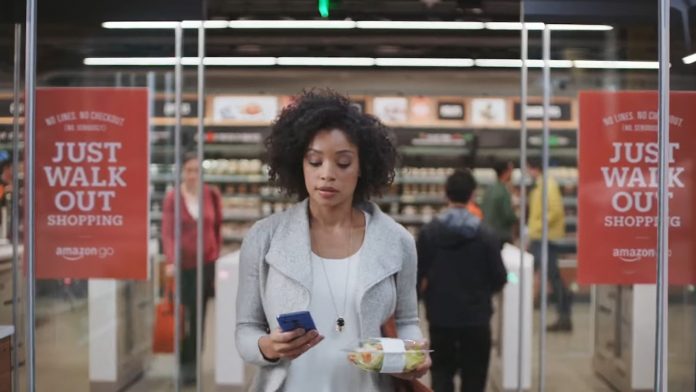Nobody likes waiting in lines. So it’s no wonder Amazon’s idea of a grocery store with no checkout line is getting such a glowing reception. The online shopping juggernaut that moved the world away from brick-and-mortars is now opening their own brick-and-mortar. Amazon Go is coming to Seattle, Washington early 2017 and will be the first store to let you take whatever you want off the shelves and walk right out.
The company is dubbing it ‘Just Walk Out Technology’. You open an app on your phone as soon as you walk in. Then pick up the items you want from the shelves. A combination of sensors and cameras will detect what you’ve chosen and as soon as you walk out, your items will automatically charge to your Amazon account.
“We used computer vision, deep learning algorithms and sensor fusion much like you’d find in self-driving cars,” Amazon says in a video walkthrough. More details on how it’ll all work are missing. But while the technical logistics have never come together like this before, it’s possible Amazon successfully figured out how to pull it all off.
The technology will not only give hungry shoppers a faster and easier way to pick up their artisanal sandwich for lunch, it’ll likely be a treasure trove of customer behavior data waiting for Amazon to dive right into. With the shoppers’ smartphones continuously snitching their location, Amazon could find itself with invaluable insight into how people move through the store. And this could inform decisions about how to rearrange items to increase sales or how to create better targeted promotions.
The Seattle store is already open today to Amazon employees in beta mode. We don’t know where it’ll open next but the Wall Street Journal claims the company wants to launch 2,000 more stores depending on the success of the trial. Amazon denies the claim but the WSJ stands by its estimate.
If the technology does take off and more stores launch across the U.S., we’ll also find ourselves facing the inevitable question of what this will do to labor and the work of cashiering. According to the Bureau of Labor Statistics, close to 3.5 million workers in the U.S. were employed as cashiers in May 2015. Of those, 856,850 worked in grocery stores specifically. Of course, these jobs wouldn’t disappear overnight but it does go to show just how big of a disruption automation could have on this sector.
Still, just like we no longer see police officers managing traffic intersections or operators switching railroad tracks, what’s certain is there’s no stopping the adoption of a novel and useful new technology. Especially one that promises to kill one more line from our daily lives.











